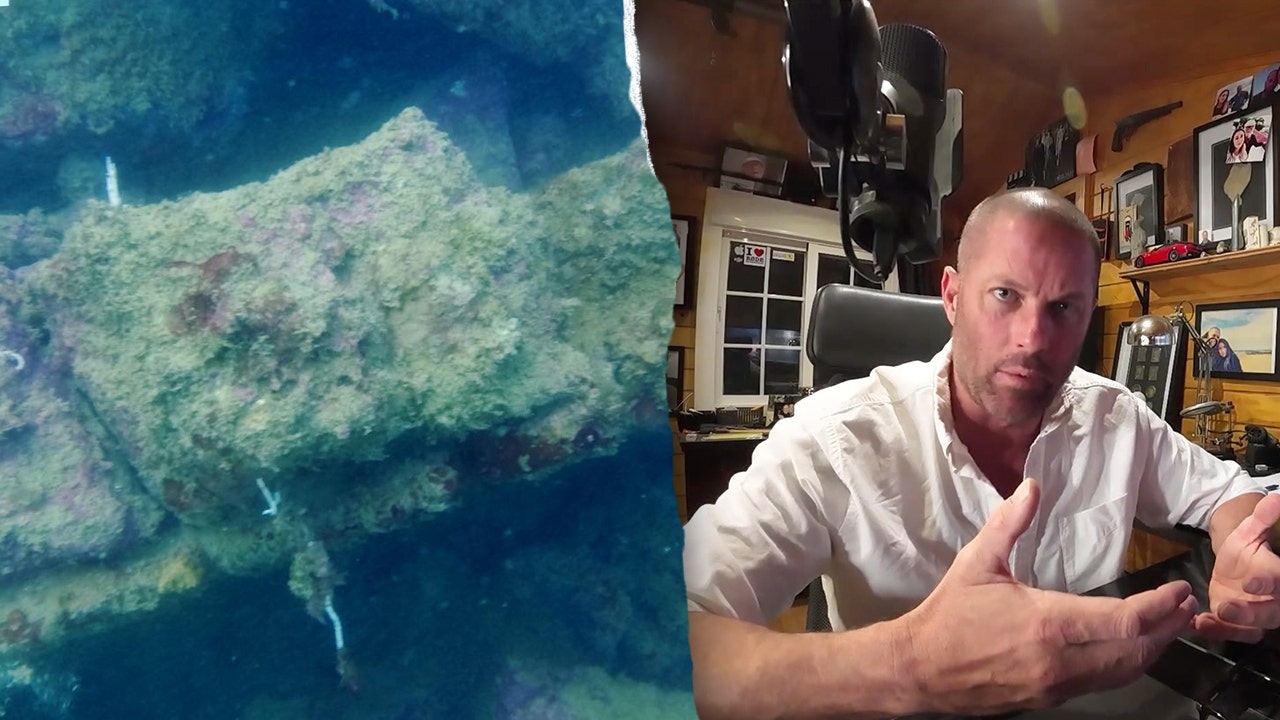Ancient ruins found off Spanish coast could be 11,000-year-old Atlantis, says research team
NEWYou can now listen to Fox News articles!
A team of independent researchers is claiming to have found Atlantis.
The research centers around stone structures on Spain’s Salmedina Island, off Chipiona in the Gulf of Cádiz, west of the Strait of Gibraltar.
The ruins are spread across roughly 11.6 square miles of offshore seafloor and adjacent coastline, with some walls measuring 23 feet high and 6.5 feet thick.
MAN FISHING WITH GRANDSON UNCOVERS MYSTERY WRECKAGE IN MUD FLATS, ARCHAEOLOGISTS INVESTIGATING
Michael Donnellan, the Spain-based founder of Ingenio Films, believes the structures are the remnants of a lost Atlantic civilization — possibly Plato’s Atlantis. He documents his beliefs in the film “Atlantica,” a 90-minute work shared with Fox News Digital.
Donnellan said the stone slabs are only visible twice a day at low tide. And he estimates they may be over 11,000 years old.

Independent researchers claim that massive stone ruins off Spain’s Salmedina Island could be evidence of Plato’s Atlantis. Pictured at left are the coastal waters of Cadiz, further away from Sal Medina. (Ingenio Films)
So what’s behind his theory? Donnellan said it’s all about depth.
Geologists believe, he said, that in this area anything buried at around 3 meters deep — or 10 feet — is roughly 3,000 years old.
“What we’re finding is more than 20 meters in depth,” he noted. “And when you go down 15 to 20 meters, you get to the floor level … but in reality, you have to consider there are probably another five or 10 meters, or maybe even 15 meters of sediment on top of the underwater ruins, which further exaggerates the antiquity.”
“The discoveries we’re making are real, and the efforts of an extraordinary team, including divers, archaeologists and specialists.”
This all leads Donnellan to believe they are much older than a few thousand years — before the Phoenicians, Tartessians and Romans.
SCHOOLBOY SPOTS AMERICAN REVOLUTION WARSHIP ON BEACH AFTER STORM UNCOVERS 230-YEAR-OLD WRECK
“[They’re] around 10-12,000 years, give or take a couple of thousand years, according to our geologists,” he said.
Not only are the structures ancient, Donnellan argued, but there appears to be evidence of a cataclysmic event — not unheard of, as the island lies near the Azores-Gibraltar Transform Fault.
“Normally, when you have sediment deposits over a long period of time, you’ll find stratification,” the researcher said. “But when there’s a sudden sedimentary deposit — a very chaotic, cataclysmic deposit — what you find instead is no stratification, just a massive pileup.”

Michael Donnellan, the Spain-based founder of Ingenio Films, believes the ruins may date back 11,000 years, long before known advanced civilizations. (Ingenio Films)
“There’s every indication these settlements were affected by a really traumatic impact or a series of climatic changes.”
Researchers used various technologies, including LiDAR and a multibeam echosounder, to study the site’s details, Donnellan said. The echosounder allowed them to create a 3D map of the ocean floor.
Donnellan said the “Atlantica” documentary is the culmination of a decade of work, which included over 200 dives as well as careful study of Plato’s writings.
“The discoveries we’ve been making are so precisely similar to Plato’s texts on Atlantis that it makes it hard to think we’ve found anything other than what he described,” Donnellan said.
“Our work on this project is immense and will continue with certainty for many years to come.”
“However, for people who are afraid of the word ‘Atlantis,’ I prefer to use the term ‘Ancient Atlantic Culture.'”
For those who think consulting ancient sources to assist with archaeological discoveries is unheard of — consider this.
MYSTERIOUS 1,600-YEAR-OLD SETTLEMENT EMERGES FROM SOIL WITH RARE ROMAN MILITARY FINDS
When archaeologist Heinrich Schliemann found the remains of Troy in the 1870s, it was assumed that the site had been purely mythological.
But Schliemann dug up walls, fortifications and artifacts that proved Troy’s existence — as well as the remnants of its conflicts. Donnellan believes that he could similarly shift Atlantis from myth into history.

Donnellan believes stone structures in the Gulf of Cádiz are remnants of a lost Atlantic civilization. (Ingenio Films)
“Either Plato was talking about this very place, or it’s a tremendous coincidence that science and Plato’s texts are coming together,” Donnellan said of the Salmedina site.
If proven, Donnellan’s findings would suggest the earliest advanced civilizations were far older than Mesopotamia, which dates back about 5,000 years.
CLICK HERE TO SIGN UP FOR OUR LIFESTYLE NEWSLETTER
There is not yet any academic consensus on Donnellan’s findings.
Juan Antonio Morales, a stratigraphy professor at the University of Huelva in southern Spain, told local outlet Cadiz Directo there’s “no evidence of human action in this area,” meaning in the coastal formations he has studied. Instead, he attributed them to geological processes. His comments were about the region in general, not Donnellan’s site specifically.
José “Pepe” Orihuela, an anthropologist and author of “Atlantis: The Light of the West,” told Fox News Digital that it’s “reasonable” to believe Plato’s Atlantis story is “an echo of the existence of the megalithic phenomenon in western Holocene Europe.”

Donnellan argues the ruins reveal a cataclysmic event, possibly linked to tectonic activity in the region. (Ingenio Films)
The Holocene began about 11,700 years ago — roughly 9700 B.C. — marking the end of the last major ice age.
“Cultural phenomena such as megalithism suggest that during the Holocene, a flourishing culture or civilization thrived in this part of the world, with its epicenter in the southwest of the Iberian Peninsula, specifically along the coasts washed by the waters of the Gulf of Cádiz,” said Orihuela.
For those who think the formations are natural or far younger than several thousands of years, Donnellan encourages them to watch his film series. The distribution is underway, with an official release date to be announced.
CLICK HERE FOR MORE LIFESTYLE STORIES
“The discoveries we’re making are real, and the efforts of an extraordinary team, including divers, archaeologists and specialists,” Donnellan said.
“The ruins we’ve discovered under the water are only a small fragment of the entire series of discoveries, which all point to the fact that the Iberian Peninsula had a thriving culture many thousands of years before previously assumed.”
The next steps are to continue the research, he said — both on land and underwater.

“I hope the public sees the importance of our work,” said Donnellan. (Ingenio Films)
“Our work on this project is immense, and it will continue with certainty for many years to come. This is just the tip of the mountain.”
He added, “I hope the public sees the importance of our work … that humanity as we know it is far older than we’ve been led to think.”
CLICK HERE TO GET THE FOX NEWS APP
“Everything we consider at the core of humankind — culture, navigation, science, art, music — it’s all far older than we’ve been taught … Something truly tragic happened in the ancient past, which almost led to our destruction.”
He also said, “We basically all need to get along better!”
Source link
editor's pick
latest video
Sports News To You
Subscribe to receive daily sports scores, hot takes, and breaking news!




